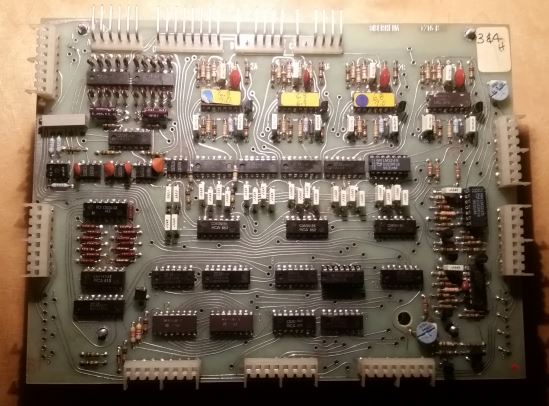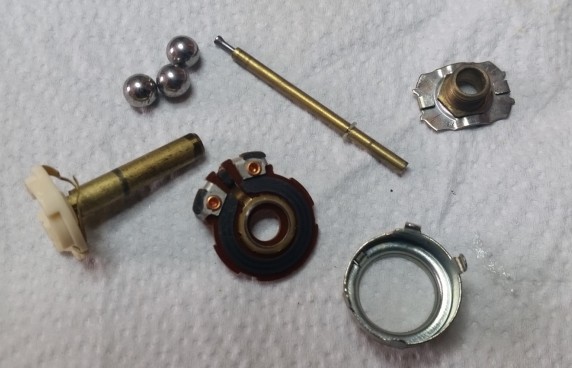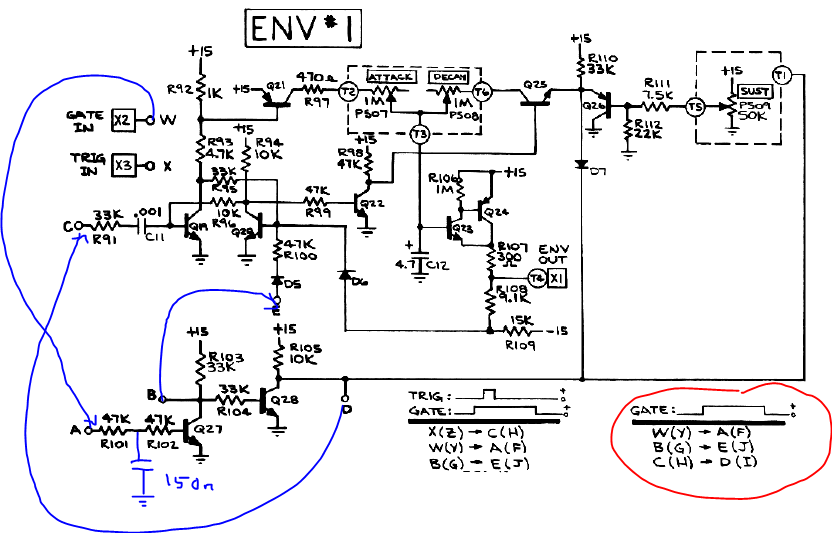A nice, but completely not working Oberheim Four Voice came to the workshop some time ago.
First of all, the power supply had to be repaired and converted to 230V mains voltage by using a toroid transformer.
It has been mounted to a small sheet of Al metal to avoid drilling additional holes into the Obie.
After repair and installation of the power supply PCB, the main part of the restoration might begin
(PSU photos to follow)
Every module on the front panel will undergo a thorough treatment: all potentiometers will be removed, opened, cleaned, lubricated and tested. PCBs will be cleaned, checked for cracked solder connections, switched will be cleaned and lubriatced. Electrolytic capacitors will be replaced, and as this model used a special type of film capacitors which tend to crack (sometimes called tropical fish caps due to their color stripes indicating their capacitance value), also the film capacitors will be replaced. Actually several have broken apart from their leads by the slightest touch, so they are no way reliable for continued service. Poor fish.




